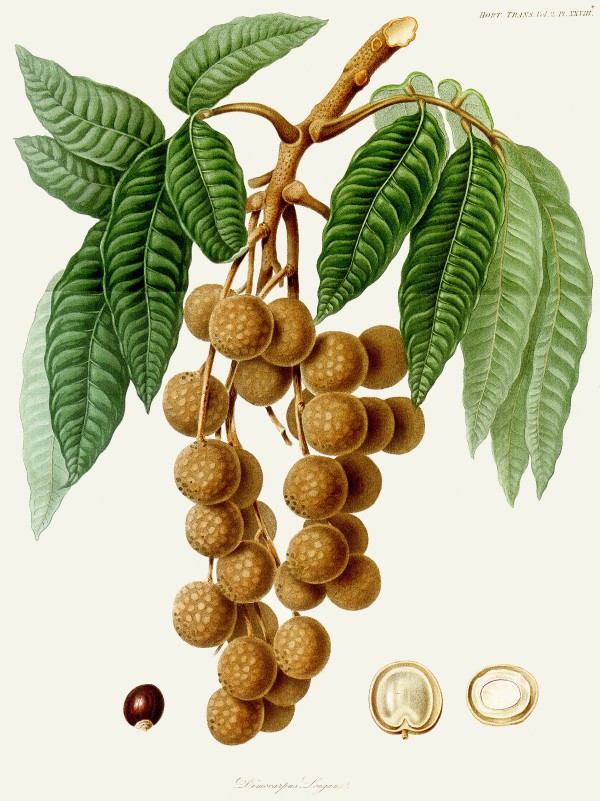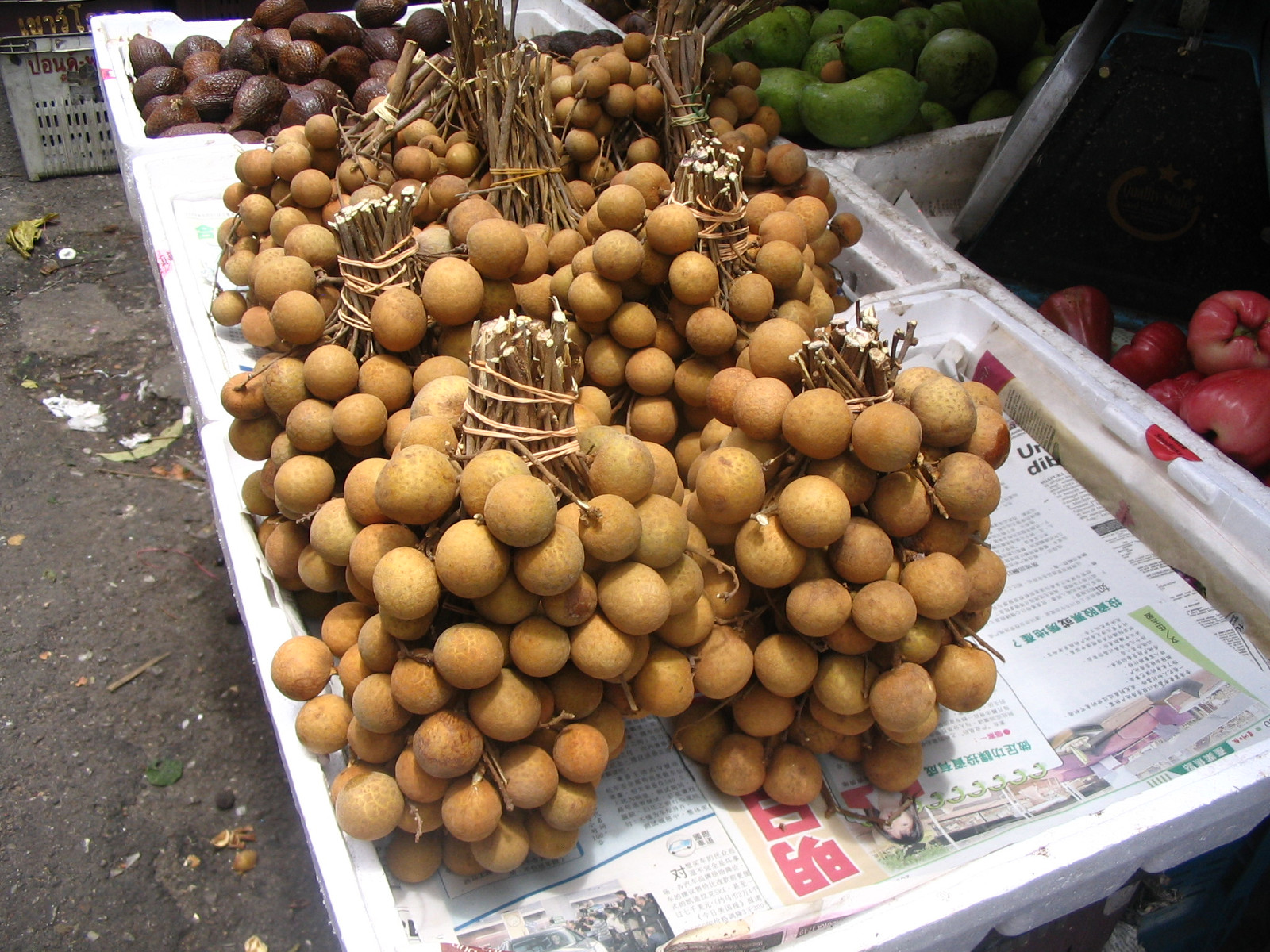Dimocarpus longan Lour.) - Sapindaceae - longan, Longan
„The fruit hangs in drooping clusters that are circular and about 1 in (2.5 cm) wide. The peel is tan, thin, and leathery with tiny hairs. The flesh is translucent, and the seed is large and black with a circular white spot at the base. This gives the illusion of an eye. The flesh has a musky, sweet taste, which can be compared to the flavor of lychee fruit… The taste is different from lychees; while longan have a drier sweetness similar to dates, lychees are often messily juicy with a more tropical, grape-like sour sweetness.“ wikipedia
„Esters (68.4%) and terpenoids (27.1%) were quantitatively the most significant among longan volatiles, and ethyl acetate (66.2%) and E-β-ocimene (26.7%) were clearly dominant.“
[Wong, K. C., et al. „Volatile Constituents from the Fruits of Four Edible Sapindaceae: Rambutan (Nephelium lappaceum L.), Pulasan (N. ramboutan‐ake (Labill.) Leenh.), Longan (Dimocarpus longan Lour.), and Mata Kucing (D. longan ssp. malesianus Leenh.).“ Flavour and fragrance journal 11.4 (1996): 223-229]
„Terpenes were found to be prominent compounds in both fresh and dried longan. The highest normalized amount (peak area) of volatile compounds in fresh and dried longan was β-ocimene which presented in cis- and trans- form. Zhang and Li (2007) reported that ethyl acetate, β-ocimene and allo-ocimene were typical aroma of fresh longan. Three of the identified constituents (ethanol, ethyl acetate and cis-ocimene) have also found by Susawaengsup et al. (2005), using HS-SPME-GC-MS for analysis the volatile components of five fresh longan cultivars (Biew Kiew, Chompoo, Edor, E-haew and Kahlok)… Ethyl acetate has aromatic note as fruity (Guillot et al., 2006; Chen et al., 2006) that was the major detectable volatile product of the ripe fruit (Robertson et al., 1995). In dried longan, more volatile compounds were detected compared to the fresh fruit… Many volatile compounds were produced during drying especially aldehyde, acid, ester and alcohol for instances 3-methyl butanal; octanoic acid, ethyl ester; phenylethyl alcohol and 1-octen-3-ol …“
[Lapsongphol, Saranya, et al. „Effect of drying temperature on changes in volatile compounds of longan (Dimocarpus longan Lour.) fruit.“ Book of abstracts of the conference on International Agricultural Research for Development, Tropentag, Witzenhausen, Germany. 2007]
The SPME headspace volatiles of fresh puree of four longan cultivars were collected using a DVB-CAR-PDMS fiber and analyzed with GC-MS. Main volatile components were (µg/L): Ethanol (33-85), ethyl acetate (80-121), ethyl butyrate (2-32), ethyl crotonate (157-760), methyl 2-hexenoate (0-760), myrcene (5-11), 1-octen-3-ol (0.6-5), ethyl hexanoate (713-6177), E-β-ocimene (188585-243581), γ-terpinene (9-26), linaool (0-1229), (E,E)-2,6-dimethyl-1,3,5,7-octatetraene (cosmene; 0-5420), allo-ocimene (32-75), ethyl benzoate (80-227), methyl salicylate (0-535), ethyl octanoate (167-3116), α-farnesene (102-749), ethyl tetradecanoate (0-69) and ethyl hexadecanoate (13-56).
[Zhang, Yi, et al. „Headspace solid-phase microextraction-gas chromatography-mass spectrometry analysis of the volatile components of longan (Dimocarpus longan Lour.).“ European Food Research and Technology 229.3 (2009): 457-465]

Trans. Roy. Hort. Soc. London vol.2, t.28 (1822) plantillustrations.org

Dimocarpus longan fruits at Chow Kit market, Kuala Lumpur, Malaysia wikimedia PD
